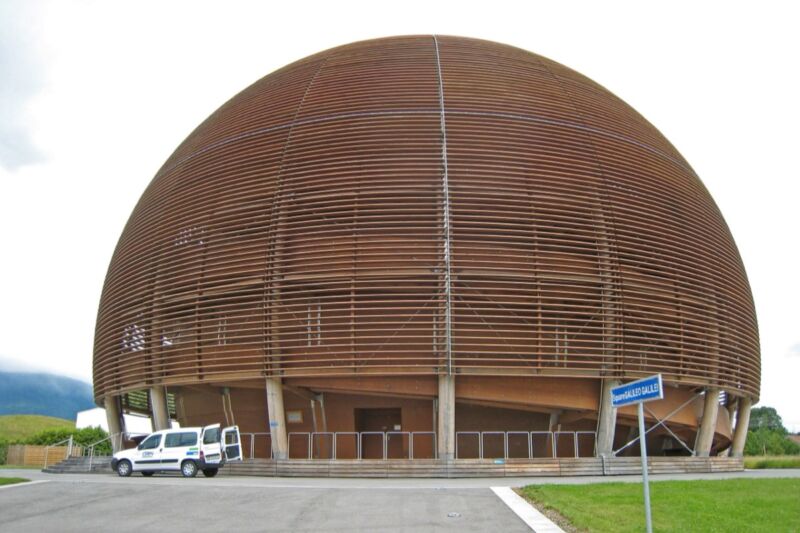One day, human wombs may no longer be necessary for bearing children. In 2016, a research team in Cambridge, England, grew human embryos in ectogenesis—the process of human or animal gestation in an artificial environment—for up to 13 days after fertilization. A further breakthrough came the next year, when researchers at the Children’s Hospital of Philadelphia announced that they had developed a basic artificial uterus named the Biobag. The Biobag sustained lamb fetuses, equivalent in size and development to a human fetus at roughly 22 weeks gestation, to full term successfully. Then, in August of 2022, researchers at the Weizmann Institute of Science in Israel created the world’s first synthetic embryos from mice stem cells. In the same month, scientists at the University of Cambridge used stem cells to create a synthetic embryo with a brain and a beating heart.
Ectogenesis has the potential to transform reproductive labor and reduce risks associated with reproduction. It could enable people with wombs to reproduce as easily as cisgender men do: without risks to their physical health, their economic safety, or their bodily autonomy. By removing natural gestation from the process of having children, ectogenesis could offer an equal starting point for people of all sexes and genders, particularly for queer people who wish to have children without having to rely on the morally ambiguous option of surrogacy.
If safe and effective ectogenesis were made accessible—as opposed to being privatized, which risks further entrenching social and economic inequalities—the technology could result in a more prosperous and more equal society. Yet development of ectogenesis could also wreak havoc on the hard-fought right of women and people with wombs to access safe and legal abortion, and could significantly weaken abortion policies worldwide.
Current philosophical literature and legislation on abortion revolve around three debates: the moral status of the fetus, women’s bodily autonomy, and the fetus’s viability. Ectogenesis means that fetuses at all stages will be viable, so the technology’s development will impact all three of these debates.
Antiabortion advocates tend to argue that the fetus is human at conception and that killing an innocent person by abortion is immoral. Pro-choice defendants of abortion rights, meanwhile, emphasize bodily autonomy and draw on arguments such as those made by philosopher Judith Thomson in her highly influential 1971 essay A Defense of Abortion. Thomson argues that even if a fetus is a person at the moment of conception, a woman’s bodily autonomy—her right to decide what can happen in and to her body—means that it is morally acceptable to remove the fetus from her body. The ensuing death of the fetus is an inevitable consequence of ending the pregnancy, rather than the woman’s intention. This means that abortion is more an act of self-defense on the woman’s part than an intentional killing.
Meanwhile, in an effort to strike a balance between women’s bodily autonomy and the fetus’s moral status, abortion legislation in many countries uses fetal “viability”—a fetus’s ability to survive outside the womb, including when assisted by medical devices—as a measure to determine the moral acceptability of abortion. Under law in many places where abortion is permitted, the fetus’s right to life transcends a woman’s bodily autonomy at the point when the fetus becomes viable. Abortion law in the United Kingdom, for example, allows abortion only before 24 weeks of fetal development, the earliest development stage from which a fetus can survive with the help of medical devices.
Successful ectogenesis would render the fetus viable at a very early stage, possibly even from conception. If ectogenesis—even partial ectogenesis—becomes available, it would then be possible for an unwanted fetus to be transferred into an artificial womb to continue developing without harming a woman’s bodily autonomy, depending on how the fetus is removed. In this way, women would be able to end their pregnancy without resorting to traditional abortion. Given this option, if a woman chooses traditional abortion regardless, the abortion will appear more like an intentional killing.
As a result, if abortion jurisprudence continues using fetal viability as its central criterion for whether abortion should be allowed, abortion in the ectogenesis era risks becoming less morally and socially acceptable than it is today.
There is a real risk that future legislation, especially in conservative communities, states, and countries, will fully prohibit abortion once ectogenesis becomes available. Though ectogenesis would make it possible to avoid pregnancy without ending the fetus’s life, such an outcome is not necessarily a positive from a feminist point of view. The reality is that some women who choose abortion do so not only to end the pregnancy—preserving bodily autonomy—but also to avoid becoming a biological mother. Ectogenesis would still make her a biological mother against her will, and using it as an alternative to traditional abortion could therefore violate her reproductive autonomy.
Another possible scenario is one in which a woman wants to abort, but her partner wishes her not to. In the absence of the bodily autonomy argument, the fetus’s viability and supposed right to develop, combined with the partner’s wishes, could result in a situation that pressures women to transfer the fetus to an artificial womb.
As ectogenesis develops further, activists and legislators will need to address the question: At what point is it justifiable for a woman to choose traditional abortion when there is another option that guarantees both the ending of the pregnancy and the fetus’s ongoing chance at life? At what point should the desires of women not to become biological mothers outweigh a fetus’s purported right to existence?
In exploring this question, it is useful to consider why some women might resist becoming biological mothers, even if they wouldn’t need to shoulder the burden of raising a child that could be adopted after being transferred and fully developed in an artificial uterus. Some hesitation would likely be caused by social attitudes and pressures related to biological parenthood. Even if a legal system has absolved a biological mother of legal obligations toward her biological child, she might still feel a sense of obligation toward the child or guilt toward herself, for not enshrining the self-sacrificing qualities often idealized and associated with motherhood. Living with these emotions could cause the biological mother psychological harm, and she might also be at risk of encountering related social stigma.
Granted, there still remains the question of whether the desire to avoid possible social stigma or psychological distress is enough to outweigh a fetus’s purported right to life. We believe that this question is highly debatable, depending on both the extent of the social stigma and the developmental stage of the fetus. Still, if social pressures and stigma are enough that a woman who uses ectogenesis would suffer, the desire of such a woman not to become a mother deserves to be respected, especially in the early stages of a fetus’s development.
Legislation surrounding ectogenesis will also have to take bodily autonomy into account by ensuring that women have the right to decide which surgeries they allow to be performed on their bodies. Although it is unclear what form the procedure of transferring a fetus to an artificial uterus will take, it will almost certainly be invasive, likely similar to a cesarean section, at least for later-stage pregnancies. Women should have the right to reject ectogenetic surgery on the grounds of bodily autonomy; otherwise, as Canadian philosopher Christine Overall has pointed out, a forced transfer procedure would be akin to deliberately stealing human organs, which is deeply unethical.
Ectogenesis complicates abortion ethics, and forcing women to undergo ectogenetic surgery impinges on both their reproductive autonomy and their bodily freedom. Allowing early abortion in a world where ectogenesis exists could be a good compromise that reduces complications and ensures women’s rights. However, for women’s reproductive rights to be assured, abortion must remain an available option, even after ectogenesis becomes reality.
Future legislation will need to guarantee that ectogenesis is a choice rather than a new form of coercion. The right to abortion will need to be recentered in law around the value of reproductive autonomy and the right not to become a biological parent against one’s will, as opposed to fetus viability. As this legal debate gains the attention of politicians, legislators, community leaders, and the wider public, how much people and societies respect women’s right to choose will become more apparent than ever.










